Moved by “unseen” hands, the deities which used to be located at the former entrance of Bukit Brown Cemetery, were also moved when the pillars of the gates were relocated.
They now have a brand new shelter – we have been informed by a credible source – which was “upgraded” by Fusion Clad Precision (of their own initiative), the company commissioned by the National Heritage Board to restore the gates.
Photos captured by Brownie volunteers help document the “sheltering” of the deities which we believe are the efforts of a community who work behind the scenes.

An unsheltered Earth Diety also known as Tu Di Gong or Tua Pek Kong taken sometime in May 2016 by Bianca Polak before a new shelter was put in place.

Guanyin captured in 2015 by Darren Koh before the gates were moved. According to Darren, Guanyin is a heavenly deity unusual for a cemetery which is traditionally the purview of the Earth Deity . But then, this is Guanyin who will take any form necessary to help humankind.

Fast forward to June 2016, and the altar, now relocated along with the gates, have now been “regularised” with the disappearance of the Guanyins, and the installation of a “new” Tua Pek Kong flanked by two Datuk Gongs, one on each side. (photo by Darren Koh)
The “upgrade” by Fusion Clad include the paint job and sensor lights, shelving and a dry place to store joss sticks and with even a lighter in place (although the last may have been placed there by others for convenience). The community who work at Bukit Brown have been observed by Brownies to pay respects before they start each construction work day as a mark of respect and request blessings for a “safe environment”

Together with this new shelter interesting is the emergence of the green bamboo inscribed with felicitations – not our local tradition, according to Darren and he wonders wonder what is the story behind them (photo June 2016 of bamboo inscriptions on left side of altar by Darren Koh)
Change is inevitable; Memories endure; The tangible is the gateway to the intangible.

A closeup of the iron wrought design detail shows what uncannily looks like a bat . In Chinese “Fu” is a homonym for fortune. (photo Chua Ai Lin)
The iconic gates of Bukit Brown which had stood in the same spot for some 90 years were removed on September 2015, and have been undergoing the delicate process of refurbishment since January 2016. It is expected to be relocated back in June 2016 and enjoined with the pillars which have already been relocated to the new entrance.
Members of All Things Bukit Brown and the Singapore Heritage Society as part of the working committee on Bukit Brown chaired by the Ministry of National Development were invited to a private viewing of the work in progress in March. The refurbishment is being undertaken by Fusion Clad Precision who were hired by the National Heritage Board.

SHS, NHB and ATBB representatives at Fusion Clad Precision premises in March 2016 (Photo Chua Ai Lin)
According to a Straits Times report published on May 3, 2016 “Iconic Gates to Greet Visitors to Bukit Brown Cemetery Again” :
“The refurbishment, which started in January, has five core steps. Rust is first removed before coatings are applied to reduce future corrosion.
The gates’ lock and latch components as well as lampholders are then repaired before missing parts are replaced. The last step is to reinforce the gates’ structural integrity.
The team, comprising four master craftsmen and three other members, is at step two of the process.
Its managing director Teo Khiam Gee said the gates need a lot of attention as well as “the human touch”.
“Skilful hands are important as the parts are in varying states of disrepair. Its original state was very fragile. It is like handling a baby,” he said.
The structure is made up of parts, such as a pair of cast-iron gates through which cars used to pass, two side gates for pedestrians, and four free-standing square columns.
It was likely prefabricated in Britain and shipped to Singapore. Its square columns were cast on the spot.”
The report adds:
“NHB’s assistant chief executive of policy and community, Mr Alvin Tan, said retaining and refurbishing the gates are important as they “provide a sense of arrival to the cemetery and preserve a sense of continuity for visitors and interest groups”.
The refurbishment is an initiative of a multi-agency work group chaired by the Ministry of National Development. It includes NHB, the Land Transport Authority (LTA), and civic organisations All Things Bukit Brown and the Singapore Heritage Society (SHS).
The effort is guided by conservation best practices shared by SHS. The heritage board also has its own in-house metals specialist, Mr Ian Tan, manager of the heritage research and assessment division.
When ready, the gates will be painted black – a common colour for outdoor use.”
You can find is a step by step graphic representation provided by ST on the process here
NHB produced a short documentary on the removal of the gates and the relocation of the pillars which supports it:
We honour the memory of the gates in our recently launched book WWII@ Bukit Brown.
An update on this post as Jing Xiang has completed his Masters thesis
Abstract : Housed within Bukit Brown Cemetery are the many tombs of pre-independent Singapore pioneers with syncretic elements of a multicultural milieu. It remained a largely forgotten site except to families who visit the burial ground especially during the annual Qing Ming (tomb sweeping) festival.
In 2011, the state announced plans to redevelop Bukit Brown. Civil society groups, who saw the site as one rich in biodiversity and embedding an important historical past, contested the decision. This contestation rehearses a long-standing tension between heritage and progress in Singapore. This dissertation recasts Bukit Brown Cemetery as a highly charged site where notions of identity and belonging are latent.
The dissertation argues for an understanding of this forgotten landscape as integral to the Singaporean psyche of home and nation. Using Benedict Anderson’s concept of imagined communities and Henri Lefebvre’s spatial trilectics as its theoretical
frameworks, this paper outlines the spatial taxonomies present in Bukit Brown, and how identity is produced and anchored in those spaces. The inquiry unfolds on two scales: the first is a micro-territorial scale where the spatial practices of the individual and domestic unit are studied in relation to the tombs and myths found within and around Bukit Brown. The second one looks at Bukit Brown as macro-territory dotted with cultural anchors signifying collective histories.
Taken together, these two scalar frames reveal the complex structures of individual and collective identity, and how such structures are still actively forming/reforming at the Bukit Brown Cemetery.
His thesis can be found here
=========================================
First Published on the blog on 20 August, 2014
Some elements in the drawing are all too familiar landmarks in the cemetery, while others suggest hidden secrets, or things that,as of the present moment, has disappeared due to the roadworks. The drawing straddles between what is real and what is imagined, what is there and what is not there, or ‘not there’ because we can’t see it (yet) like other intangible (forces or) values of Bukit Brown.
(please click to view and appreciate full image)
The Art Nouveau (Peranakan) tiles of Bukit Brown have caught the attention of a French academic who helms an international research team. The team has embarked on a 4 year study of the tiles in Asia, under an MOU with the Unesco University and Heritage Forum.
Professor Chantal Zheng together with her husband, Dr Zheng Shun-De, visited Bukit Brown recently, guided by our tiles expert, Victor Lim.
The visit, so impressed them, they wrote to All Things Bukit Brown to tell us more about their project and how they hope, they can include Bukit Brown in their study. Reproduced here with Professor Chantal’s kind permission.
“I am very grateful to your association and to Mr Victor LIM for having introduced me to this fascinating Singapore Cultural Heritage field concerning « Art nouveau tiles ». As a matter of fact, this is particularly interesting for the Tiles research team I am responsable for in the IRASIA (Research Institute for Asian Studies): Aix-Marseille University in the south of France. My Research Institute (IRASIA) is conducting historical, anthropological and sociological researches on many countries in East and South-East Asia such as China, Korea, Vietnam, Thailand, Japan, India, and Taiwan.
Three years ago, we submitted on the behalf of the University a research project on “Art nouveau tiles” in Asia to the Unesco University and Heritage Forum. The project has been accepted and a MOU has been signed by Aix – Marseille Université and The Unesco Forum for 4 years (2012-2016). The first objective being to make a survey of the presence of these specific tiles in East Asia (China, Taiwan, Japan, Korea), South-East Asia (Malaysia, Philippines, Singapore, Indonesia) and even in South Asia with India. The second objective is to select and write a report on some particular and (to use Unesco vocabularly) “exceptional” places where tiles are found in great number.
It appears that these tiles have been diffused by the Chinese Diaspora and the Peranakan culture in Asia. They constitute a cultural asset common to many Asian countries, are the testimony of cultural, artistic and even commercial exchanges between East and West at the beginning of the XXth century and that is why they present a very great interest for the research. In Singapore, I have discovered many districts with very beautiful and unique houses decorated with a profusion of tiles, all in very good state and very well preserved. And I also had the opportunity to make a visit to Bukit Brown Cemetery
I was very surprised to see so many beautiful Peranakan tombs decorated with old tiles. As far as I understand the situation, this cemetery is now on the way to being destroyed for the construction of a road. That is a real pity indeed and I do hope very sincerely the tiles may be preserved, as I doubt there is another place in the world comparable to Bukit Brown. It is our hope that these tiles will be kept in good condition as they must be considered an important element of the Singapore national treasure.
Conscious of the interest that Singapore presents and of the precious contribution of the Peranakan culture to its cultural heritage, my research team on Asian Art nouveau tiles (which includes 7 French researchers and architects, a Japanese Museum director: Hyogo Prefectural Museum of Archaelogy, a Taiwanese Association for Cultural Heritage, a Taiwanese historian and a Taiwanese architect: University of Kaohsiung), is prepared to focus now on the history of the Republic of Singapore to discover the cultural and commercial links with other Asian countries in the diffusion of Art Nouveau tiles (Japanese or European). We are very grateful to your association and to your colleagues for the help in our research during our short stay in Singapore and hope we will continue in the future to cooperate with you and with Singapore architects and historians on the tiles subject.” Chantal ZHENG, Professor, Department of Asiatic Studies, Aix-Marseille Université
You can learn more about the tiles this Sunday 12 January at Bukit Brown with Victor Lim. Details here
Kwong Tong Cemetery Kuala Lumpur
by Simone Lee
4 November, 2013
The Kwong Tong Cemetery is the oldest cemetery in Kuala Lumpur, covering 343 acres of land. It is the final resting place of many prominent city pioneers including Yap Ah Loy, the founder of Kuala Lumpur. In 2007, the 112-year-old cemetery – a green lung in the city – was named a Heritage Park.
My great grandparents are buried in Kwong Tong Cemetery and in October this year I visited them for the second time in 20 years. I can barely remember my first visit as a child. The visit was a result of a confluence of events, the catalyst : Bukit Brown. I first visited Bukit Brown in July, a week after the death of my father. In the weeks that followed I joined the Brownies regularly on their guided walks. I was moved by the stories they told of the pioneers buried there and their contributions. On October 5th, after I conducted my first guided walk “Stories of Ladies in the Straits Settlements”, I felt I was ready to trace the path of my roots.
Even as I embarked on the journey , I was helped by a fellow Brownie, Jonathan Siew who introduced me to his friend Boon Hin who knew Kwong Tong Cemetery well. He drove my mother and I around the cemetery. Naturally, our first stop was at my great grandparents’ tomb .
My Great grandparents Graves
Just like many other sinkehs (new comers, fresh from the boat from China) at that time, my great grandfather, 利曉春(1888-1962) and his wife arrived from Meixian, Guangdong in the 1930’s. He was a tailor but soon went into tin mining, a thriving commodity in Kuala Lumpur at that time. He was successful and brought my grandfather over to help him in the tin-mining business. The entire family (3 generations; great grandparents, grandparents’ siblings and their children) lived in a large British colonial villa at Bukit Bintang (which was later torn down to build shopping malls).

Kwang Tong: The graves of 利曉春(1888-1962) and his wife, Simone’s great grandparents (photo Simone Lee)
Mah Kan Poh
My great grandparent’s neighbour is Mah Kan Poh
The epitaph on the late Mah Kan Poh’s tombstone erected by his descendants.
“Born on the 14th day of the 12th Moon of Thung Chee Yam Shutt Year, or the 1st of February 1863; and Died on the 29th of May, 1938, or the 1st of 5th Moon, Mo Yen Year – at the age of 77 years. The late Mr.Mah Kan Poh was a native of Yong Kow village, Soon Tuck District – in the province of Canton. He was very thrifty and hardworking, and took to silk trading as his first walk of life. At the age of 26 years, he came over to Malaya. He was first interested in tin-mining and then – revenue farms. Later on he took to rubber planting and he could walk for miles daily in his estate and mines. One of his favourite hobbies was hunting. On many occasions, we advised him to give this up, but he turned a deaf ear to our counsel. In summing up, we might say that the deceased was a man of great courage and determination, and that we and our descendants should follow his footsteps as best we could.”
The Nanyang Volunteers Memorial erected in 1947
When the Sino Japanese War erupted on 7 July 1937, the Chinese government’s logistic concern was security of supply routes importing war materials into China. This led to the construction of the Burma Road linking Kunming with Yangon port in British Burma. The Chinese government also realized the lack of skilled drivers and mechanics in China. To solve this problem, they turned to China Relief Fund headed by Mr Tan Kah Kee to recruit drivers and mechanics from all over Nanyang, today’s South East Asia. These drivers and mechanics are known as the Nanyang Volunteers, 南侨机工. From February to September 1939, 3200 Nanyang Volunteers left in 15 batches and most eventually served on the Burma Road. Most of the Nanyang Volunteers were Chinese man but there were also some Malay and Indian men and four Chinese women. Source
The Japanese War Memorial
This site marks a 10,000 square feet mass grave of the casualties during the Japanese occupation. Remains of close to a thousand victims were relocated from the original site, “Tomb of War Victims of the Compatriots of the Republic of China” which was in a dilapidated state.
The Butcher’s Guild Graves
Built in 1931, from the back, it’s a walk through concrete grids towards the front yard.

Kwong Tong:concrete grids of the graves of the Butcher’s Guild, view from the back (photo Simone Lee)
The Lim Lian Geok Memorial
Lim Lian Geok (1901-1985) was former Chairman of The United Chinese School Teachers’ Association Of Malaysia (popularly known as Jiao Zong), was a great educationalist as well as a famous social activist.
People from all over the country, put aside their works and came all the way to pay their last respects to him, including high-ranking leaders of political parties. A fund in memory of him was set up, which was later registered as LLG Cultural Development Centre, a non-profit organization. Source
Chua Cheng Tuan : The Cycle & Carriage Family
The Cycle & Carriage family: All except for the 2 tombs at extreme left and right (forefront) are in the Chua family gated plot. You can even see the fence surrounding the cluster behind the trees on the left of photo. At the centre of the plot is Mr.Chua Cheng Tuan, the founder of Cycle & Carriage. His brother Chua Cheng Hock is buried in Bukit Brown.

Kwong Tong : centre of the family cluster is plot of Mr.Chua Cheng Tuan, the founder of Cycle & Carriage (photo Simone Lee)
A pavilion was built by Chua Cheng Tuan’s family, in front of the family plot, in his memory. Today many other graves surround the pavilion.
Other interesting tombs at Kwong Tong Cemetery
This collective teochew tomb has a large mound and a tortoise supporting the tomb stone. Engravings of the Confucian story; 24 filial exemplars lines the arms of this large tomb.

Kwong Tong:panels with stories of the 24 filial piety exemplars on the “arms” on the Teochew tomb (photo Simone Lee)
31 October 2013
At Bukit Brown, it is not uncommon to find ceramic photos of the deceased on their tombstones. They have withstood the test of time and weathered the elements of sun and rain. This one was spotted in pristine condition during the guided walk on tiles and tomb carvings on Sunday 27 October.
Mrs Tay Koh Bok (Madam Wee Geok Kiew )
The technology for ceramic photos date back to 1854, originating from France. How are they made?
“A porcelain (or ceramic) portrait is produced by firing an image onto a porcelain plaque at very high temperatures in a kiln for several hours, creating a permanent bond. The result is a vivid portrait that resists fading and the elements for 100 years or more.” source
“….transferring photo images to ceramic was a multi-step, laborious, time-consuming & potentially hazardous process, involving photographic glass plates & several types of light-sensitive emulsion salts (some of which are highly toxic). The emulsified ceramic piece (ie. now affixed with the photo) was then repeatedly fired at high temperature for many hours to obtain an impervious vitrified surface, which was then coated with a protective sealant.” source
From the mid 1930s onwards, the technology for ceramic photos became available in Singapore Before that, ceramic photos were mostly made in China, Holland, Germany & America. So the photo of Tay (1929) could conceivably have been ordered from China.
Nah Guan Seng of Scientific Photo Studio appeared to be the 1st person to offer photo ceramic services here. His photo studio was located at Bras Brasah Road, while the photo lab was at Paya Lebar.
New Singapore Industry: Ceramic Portraits (ST – 15 Sep 1935):
http://newspapers.nl.sg/Digitised/Article.aspx…
EXCERPT: “The advantages of ceramic portraiture over ordinary photography are many. It never fades, whether exposed to sun or rain, and for use [on] a grave, it has no rival.Kiangsi porcelain is said to be the best in the world for this purpose and is largely used. The work of burning, the most difficult part of the job, is done at the Studio’s laboratory at Paya Lebar. Expert knowledge of the art and great care are necessary in regulating the heat. ”
More on ceramic photos here
The most spectacular portraits of the deceased are the A4 size photos on the Tok tombs, although it is unclear whether the ceramic photo technology was used. The photo of Onn Cheng Tuan shows her in traditional nonya wear and accompanying jewelry which also speaks to the material culture of those times.
Editors note: Research by Pat Sg of Heritage Singapore Bukit Brown Cemetery
Dateline” 21 October 2013
The carvings on the tombs at Bukit Brown are commonly drawn from the 4 Chinese classics. Brownie Yik Han spotted one particular carving on an altar table which intrigued him.
His observations of the characters depicted in the tableau taken from the Romance of Three Kingdoms and what they represent:
Instead of the usual set of suspects this tableau has a rather unique combination of figures which I have yet to come across in other tombs.
The one in the middle seems to be Zhuge Liang from his garb and feather fan. On the right is almost certainly Shun and the white elephant which helped him till his fields. And I guess the one on the left of Zhuge Liang is Liu Bei as he looks rather regal. Now, each of these characters exemplify a certain virtue: Zhuge Liang – loyalty (忠), Liu Bei – benevolence (仁),Shun – filial piety (孝), so there we have part of the traditional set of virtues 忠孝仁义, the last being righteousness which is as close to the meaning in chinese as we can get in a word.
If the martial figure to the right of Zhuge Liang represents 义, the question is who can this be as it certainly is not Guan Yu, the usual poster boy for that virtue. Of course, this interpretation assumes the two figures at the extreme left are calefaire.
Editors note: If you would like to weigh in on the mysterious characters which have not been clearly identified, please add your comments on this post.
Your can read more about other tomb carvings by Yik Han on The Wayang in the Tombs , Romance of the Three Kingdoms,
.
The Wayang in the Tombs (2)
by Ang Yik Han
The Wayang in the Tombs 1 continues, as Yik Han unravels more iconic scenes from the Romance of the Three Kingdoms and other popular stories.
“Temple of Sweet Dew” (Gan Lu Si – 甘露寺)
Zhou Yu, Sun Quan’s viceroy, wanted to lure Liu Bei over to the kingdom of Wu and then incarcerate him, on the pretext of marrying Sun Quan’s younger sister to him. Liu Bei’s advisor, Zhuge Liang, saw through this and ordered Zhao Yun, one of Liu Bei’s generals, to accompany him for protection. At the same time, he sent word to Sun Quan’s father-in-law to get Sun Quan’s mother along so that she can view her prospective son-in-law at the Temple of Sweet Dew. With the old lady around, Zhou Yu’s mischief came to naught and Liu Bei and his lady successfully got hitched.
Bowing man on left is Liu Bei, seated lady in the centre is Sun Quan’s mother, man on the right is probably Sun Quan’s father-in-law.
Editors note: An insight on how Yik Han deciphered this panel.
“The costumes especially the head dress are clues. If you look at what the man on the left is wearing, you can tell he is not just another official. For some tine I thought the figure in the middle is a male till I looked more closely at her headdress which is what you will expect a more senior lady of high social status to wear. Put these two together and you have a high ranking older male, probably some lord, paying respects to an old woman also of high social status. All the other identified panels from this tomb are based on the Three Kingdoms, and there is one famous part of the novel which has this setting, so that’s how I identified the scene. If you area Chinese opera fan, you may also recognise it easily.”
Here’s an animated excerpt from the opera
Lui Bei’s Farewell to Xu Shu
Compared to his warlord contemporaries, Liu Bei was handicapped by the lack of an able advisor. Fortunately for him, a brilliant strategist named Xu Shu joined him and helped him achieve some small victories. Just when things seemed to be going well for Liu Bei, his rival Cao Cao found out about this and he managed to get someone to send a forged letter to Xu Shu, purportedly from Xu Shu’s mother. The letter claimed she was in Cao Cao’s custody and her life was in danger unless Xu Shu abandon Liu Bei and join Cao Cao’s camp. The filial Xu Shu had no choice but to obey and the inevitable farewell came. On the day Xu Shu left, Liu Bei saw him off with his retainers and followed behind him for part of his journey. Upon reaching a forest, Liu Bei exclaimed “I want this forest to be cut down!” When his retainers asked him why, Liu Bei replied that this was because the trees blocked his view of the departing Xu Shu.
Here’s an opera you can view on the sending off.
The panels are from the tombs of the Teo Family located in Hill 2
The Third Madam teaches her son (三娘教子)
During the Ming Dynasty, there was a businessman by the name of Xue Guang who had a wife Mdm Zhang and two concubines, Mdm Liu (who bore him his only son Xue Yi) and Mdm Wang. Xue Guang conducted his business far from home. One day, he asked a man from his hometown to deliver five hundred taels of silver to his family. Instead of doing so, the man took the silver for himself and told the Xue family that Xue Guang had died. As they believed the report to be true and there were no news from Xue Guang, Mdm Zhang and Mdm Liu remarried after some time due to the family’s slide into poverty.
Only Mdm Wang chose to remain and take care of Xue Yi even though he was not her flesh and blood, together with an old servant Xue Bao. She weaved cloth to support Xue Yi through school. Xue Yi was however mocked by other children in school as the boy without a mother. Losing his temper, he took it out on Mdm Wang when he got home, saying that she had no right to punish him as she was not his mother. In fury, she slashed the cloth on her loom into two, signifying the serverance of their relationship, shocking Xue Yi and Xue Bao who hurriedly interceded on his young master’s behalf. Xue Yi came to his senses and promised to apply himself to his studies diligently, and even offered the cane to Mdm Wang to punish himself. In years to come, Xue Yi gained honours in the imperial examinations.
A movie based on the opera can be found here
The Wayang in the Tombs
by Ang Yik Han
(Popular tales performed in Chinese Wayang carved in iconic scenes on tomb panels.)
In the ” Romance of the Three Kingdoms” General Guan Yu is immortalised as the epitome of loyalty and righteousness. He played a significant role in the establishment of the state of Shu Han during the period of the Three Kingdoms.
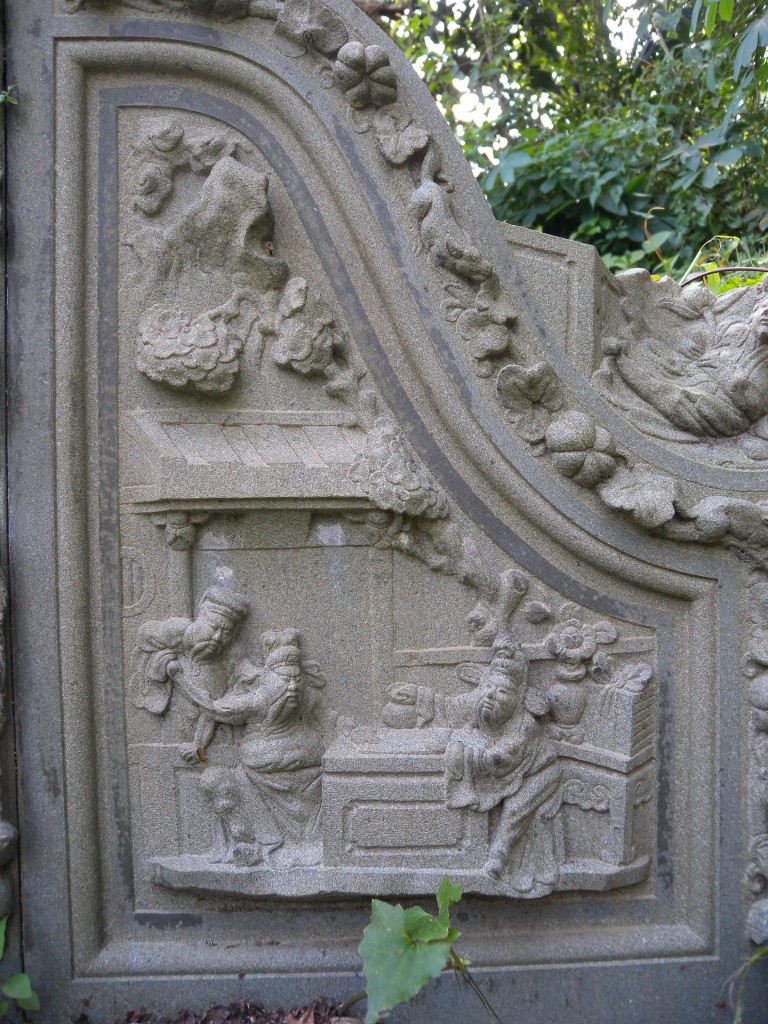
Guan Yu took a poisoned arrow in his right arm when he was besieging the city of Fanzheng. Determined not to retreat, he called upon the services of the famed physician Hua Tuo to treat him on the battlefield. Hua Tuo saw that the poison had spread to Guan Yu’s bones and he had to operate on his arm and cleanse the poison by scrapping his bones. Undeterred, Guan Yu subjected himself to the ordeal, all the while sipping his wine and playing a game of chess. ( photo by Yik Han)
Legend? Embroidered truth? It does not matter, over the ages from at least the Ming Dynasty, the image of Guan Yu smiling and sipping his wine while Hua Tuo scrapped his arm bone has been a source of wonder and encouragement for many.
This tomb is located in Hill 2 and belongs to the Teo Family.
More tombs featuring Guan Yu, here
From Madam White Snake :
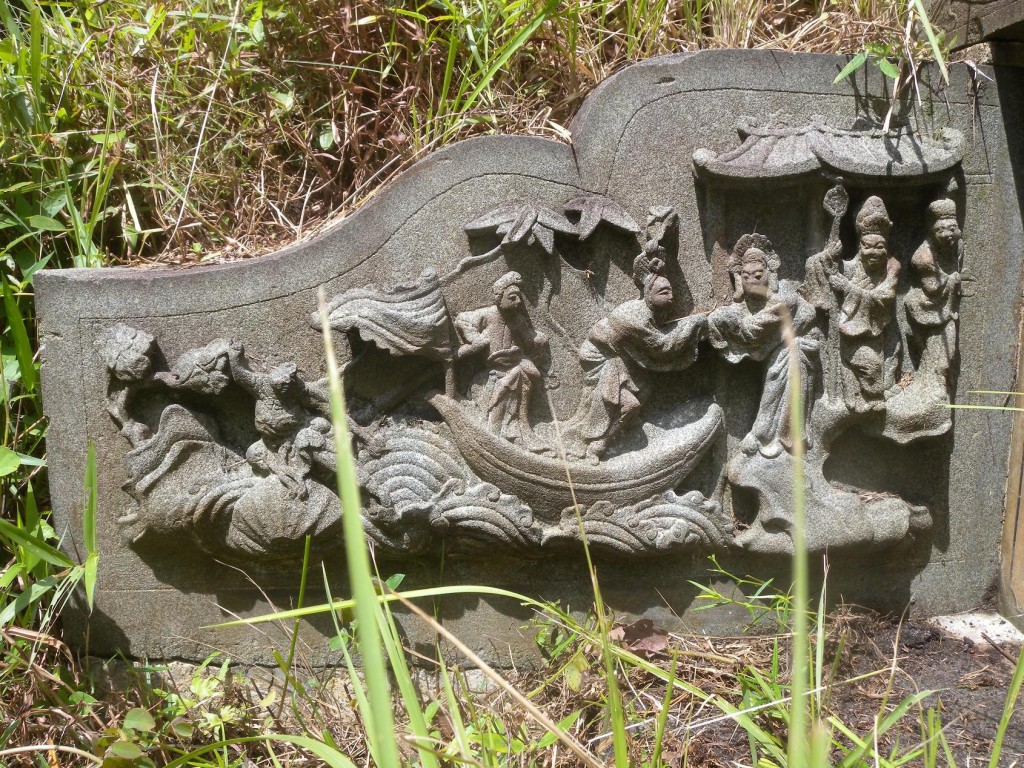
A panel possibly of the White Snake parting with her husband after he was taken in by the words of the monk Fa Hai. (photo Yik Han)

The White Snake and her companion the Green Snake (the two ladies in the boat) leading the creatures of the sea in an attempt to flood Jinshan Temple and rescue her husband Xu Xian (许宣) from the clutches of the monk Fa Hai (法海). (photo by Yik Han)
From Nezha conquers the Dragon King :

Nezha storming the palace of the Dragon King with his signature Qiankun ring in one hand, his spear in the other and riding on his “fire wind wheels”. The Dragon King flanked by his courtiers are seated on his throne on the right, a bumbling turtle is trying to resist Nezha, and on the left is a shellfish nymph. (photo Yik Han)

Nezha storming the Dragon King’s domain as the Dragon King riding on a magnificent dragon beats a hasty retreat covered by his underlings. The armed figure on the right may be Nezha’s father Li Jing (李靖), furious with the havoc created by his son (Photo Yik Han)
The panels can be seen at the tombs of Poh Cheng Tee and his wife, and mother, in Hill 1, stake numbers 1017 – 1019. Exhumation of staked tombs in the way of the 8 lane highway is expected to begin after April 15th
Four Appointments (四聘)
by Ang Yik Han
Yet another set of four popular stories from Chinese history, this time found at the double tomb of Chew Joo Chiat and his wife, the subjects of the “Four Appointments” are two great rulers and two renowned officials who assisted their masters ably in establishing their kingdoms.
1 Yao Appoints Shun (尧聘舜)
Yao (尧), a great ruler of the Xia Dynasty (夏朝) the origins of which have been lost in time, was troubled. His son was not fit to assume the mantle of leadership and the whole land knows it. He had no choice but to hand over to someone from outside the family but a suitable candidate had to be sought. Word came to his ear of a filial young man, Shun (舜), a commoner who had lost his mother at a young age. His father’s already bad temper became worse after this and after he remarried, his affection turned from him to his new son. Shun’s stepmother and his stepbrother also treated him badly. Despite this, he was steadfast in his obedience to his parents. His filial piety was such that one day, the celestial courts sent an elephant to help him till the soil and birds to weed his fields. Yao judged that Shun was the best candidate for the position after he met him and even married his two daughters to him. Shun did not fail to disappoint and became another great ruler. The motif of the elephant in Chinese art has since been associated with peace and prosperity in the land on this account.

Shun sits by his fields as the elephant and what looks like a well-fed bird helps him out with his farming. Yao approaches from the left. (photo Yik Han)
2 Shun Appoints Yu (舜聘禹)
During Shun’s (舜) reign, floods were a constant scourge for the people. He appointed Gun, father of Yu (禹) to tackle this problem. Gun’s efforts were ultimately unsuccessful and Yu was appointed in his place. Unlike his father who tried to stem the flood waters with dams and embankments and failed, Yu created tributaries to disperse the waters. He was so dedicated to his work that he was supposed to have traveled around the land continuously for ten years. Even though he passed by his house 3 times, he did not stop to visit his family and missed his child’s birth and growing years. When he eventually succeeded in taming the waters, his knowledge of the lay of the land was unsurpassed. Coupled with his well-known concern for the people’s welfare, none was thought more eligible to take over as Shun as ruler. Till today, he is known as the “Great Yu” (大禹) in remembrance of his deeds.

Yu building a brick wall in preparation to channel the flood waters as Shun arrives on the scene. (photo Yik Han)
3 Shang (Cheng) Tang Appoints Yi Yin (商汤聘伊尹)
The last ruler of the Xia Dynasty (夏朝) was a tyrant notorious for his wanton cruelty and excesses. He paid no heed to governmental matters, which was to be his undoing. One of his vassals, Cheng Tang (成汤) saw the opportunity to advance himself, quietly built up his strength and bringing men of talent into his fold. Hearing about Yi Yin (伊尹), he visited and met him with his buffalo. Yi Yin rebuffed his invitation however, stating that he had no wish to become an official and that he had no abilities to speak of. Cheng Tang had no choice but to leave. Soon after, however, Yi Yin was brought to his attention again, such was his reputation. It was only on Cheng Tang’s third visit that he succeed in convincing Yi Yin to cast his lot with him. With his help, Cheng Tang overthrew the Xia and became the first king of the Shang Dynasty (商朝). As for Yi Yin, he is remembered as a great politician, strategist, philosopher as well as a good cook; he was adopted as one of the patron deities of cooks in China.

Yi Yin pulling his buffalo behind him as Cheng Tang respectfully makes clear his intention in meeting him. (photo Yik Han)
4 King Wen Appoints Tai Gong (文王聘太公)
During the Shang Dynasty (商朝), the Duke of the West, Ji Chang (姬昌), traveled around his realm to seek men of talent who could help him administer his domain. One day, on the banks of the River Wei, he saw an old man who was fishing with no bait, using only a bare fish hook which was straight instead of curved. When asked why he did this, the old man replied that those who were willing would be hooked voluntarily. Realising he had met an exceptional person, the Duke invited the old man into his carriage and personally pulled him along for eight hundred steps. The old man, Jiang Ziya (姜子牙), was to become the Duke’s trusted advisor and his kingdom’s chancellor, helping his son overthrow the tyrannical rule of the Shang Dynasty and establish the Zhou Dynasty (周朝). Ji Chang was given the posthumous title of King Wen (文王) after his son’s success and his able advisor was appointed as the Grand Duke (太公). This story forms part of the “Investiture of Deities” (封神演义), a fictionalised account of the Zhou’s triumph over the Shang replete with supernatural elements which has been part of popular literature and performance arts for centuries.

The Duke of the West on his way to visit the old man who waits for fish which cast themselves willingly on his hook. (photo Yik Han)
A common thread runs through the four stories: in their search for men of ability and virtue to help administer the country, rulers have to humble themselves and seek far and wide. The stories are a reminder of the respect that society is supposed to accord to the ones who have both the talent and heart to assume the mantle of government.










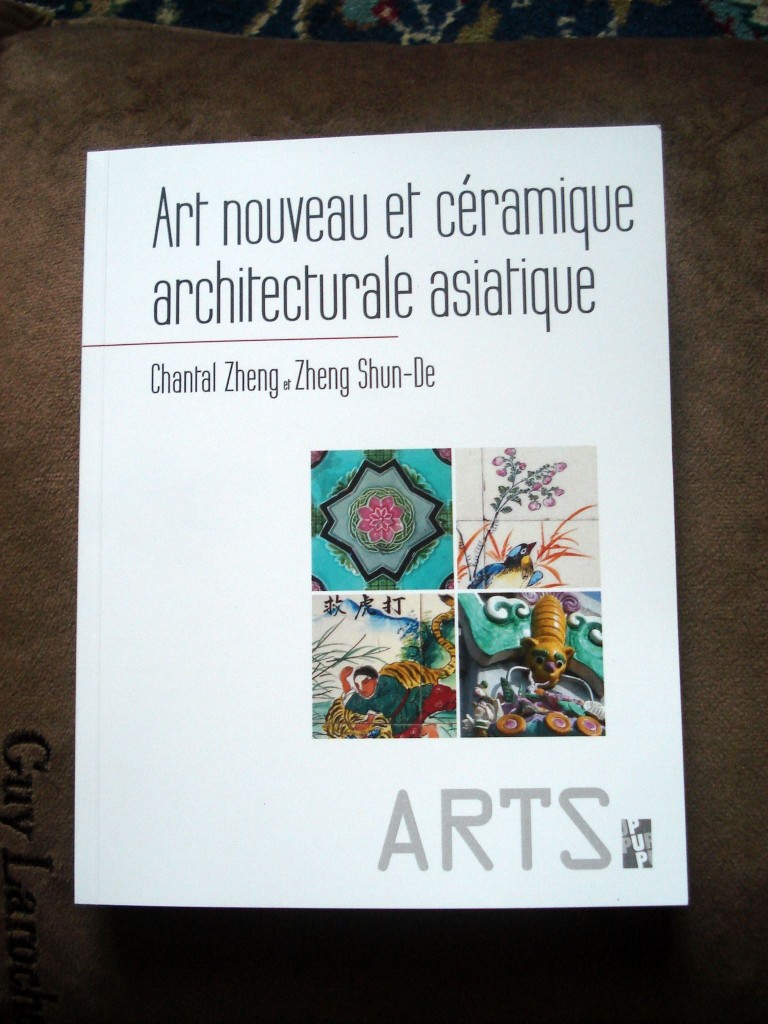














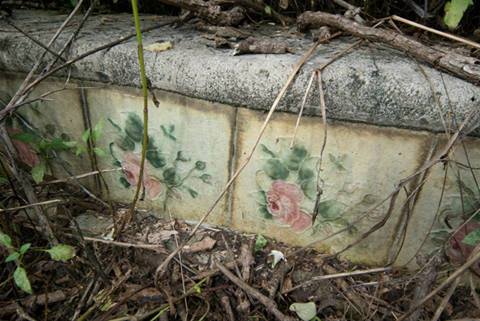

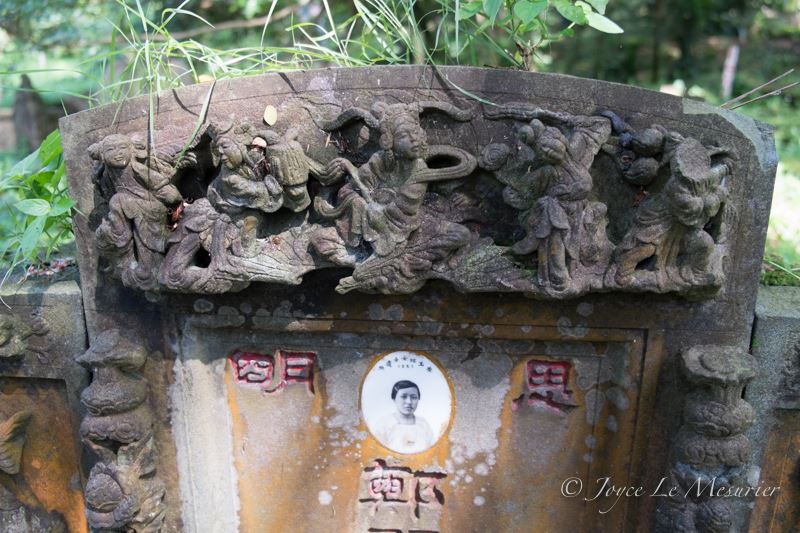



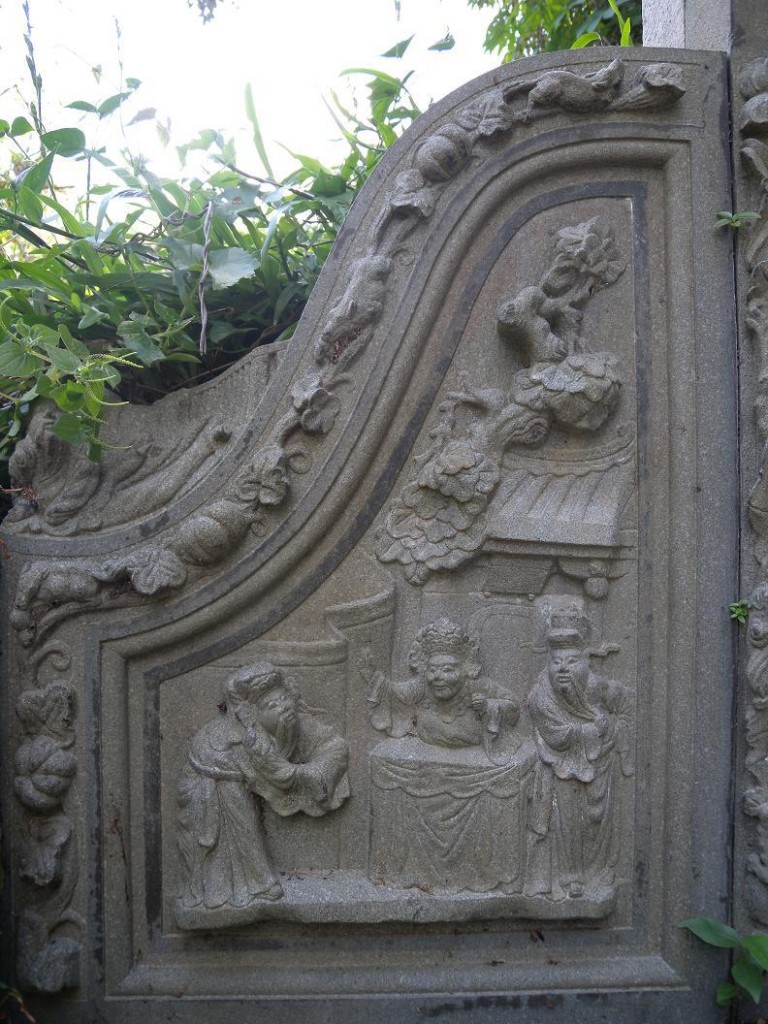


Recent Comments